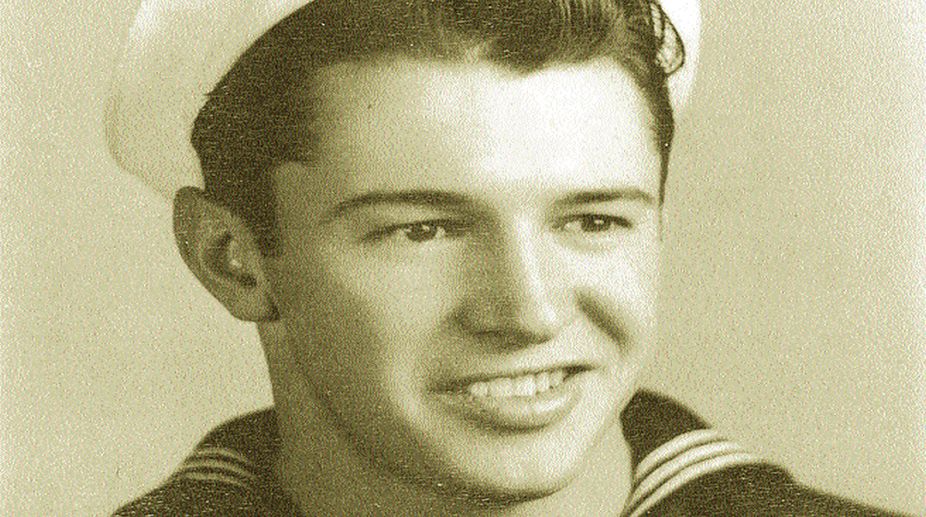Indian army conducts Gaurav Yatra
With an aim of honouring the sacrifices and valour of Veer Naris and Veterans, the Indian Army conducted ‘Gaurav Yatra’, a motorcycle rally, covering over 1000 kilometres.

Seaman Calvin Graham
Indian soldiers fought with distinction in World War II. Their participation included action within South Asia, and defending India, which was controlled by the British; Indian troops also assisted fighting the Japanese in Burma. Over 87,000 Indian soldiers died in World War II.
Field Marshal Sir Claude Auchinleck, Commander in Chief of the Indian Army from 1942, asserted that the British could never have come through World War I and II, if they did not have the Indian Army.
Advertisement
The British Indian Army earned 17 Victoria Crosses during World War II. It was a war that literally affected the entire world and every nation had its own narrative with its own heroes.
Advertisement
Soldiers in the midst of grave danger, individually, returned triumphant. Some of them earned accolades because of a rare level of participation.
Let us view one exceptional naval personality, who was decorated in battle, all the way back in 1942. Was there something unusual about the decorations he earned?
Yes, there was, because Seaman Calvin Graham was only 13 years old when he was awarded medals for bravery. Graham’s story began when battleship USS South Dakota, equipped with powerful engines, rolled out of Philadelphia in August 1942.
The crew comprised “boys” who were enlisted after the Japanese bombing of a US naval base, Pearl Harbour; this action of the Japanese precipitated the US’ entry into World War II.
These new recruits had no inklings of the danger they would experience. The ship’s Captain, Thomas Gatch was determined to show America’s supremacy on the high seas. “No ship more eager to fight ever entered the Pacific,” wrote ahistorian.
The South Dakota would “plod” back to New York’s port for repairs, since the ship endured the most violent battles at sea. However, she was destined to be one of the most decorated warships in the US Navy’s history. The Japanese did everything possible to erase every tangible identity of the ship and even avoided mentioning the name, USS South Dakota, in their communications.
However, the vessel was not at the bottom of the Pacific, which they hoped it to be. The ship continued with its crew’s tenacity, which included a Texas-born gunner who was ordained to be one of America’s youngest war heroes. Seaman Calvin Graham set out for battle in the summer of 1942 at the age of 12.
He took this bold step because he was enduring an abusive stepfather and with an elder brother left home for another rooming centre.
Graham supported himself by delivering newspapers after school. He was close to the news of the times and the newspapers carried many reports of Hitler whom Graham began to dislike. He lost his cousin in the same war and decided to fight in the battle. But enlisting into the Army had many challenges, the first of which was his mother’s signature to testify his age.
This was difficult, so with the help of someone else he forged his mother’s signature. Graham had to look older so began to shave and taught himself to speak with a deeper voice. The entire sequence of him preparing himself to join the navy gradually developed like a classic tale.
The dentist insisted that Graham was nowhere near the age of 17 but the fact of the matter was that the US desperately needed more recruits for battle, so Graham was enlisted. He told his mother he was off to visit relatives but instead sailed to San Diego for basic training.
Subsequently, Graham was selected to take on duties on the USS South Dakota and action began from day one on the ship. In the midst of the war, the South Dakota had earned a reputation that it would shoot anything that came near it. In the Battle of Guadalcanal, this ship encountered eight Japanese destroyers — the South Dakota set fire to three of them.
The Japanese retaliated and the South Dakota took 42 enemy hits. Graham who was manning a gun was hit by shrapnel that tore through his jaw. Despite this setback he got onto his feet to help others who were injured and encouraged them to think of life not death.
“That was a long night and it aged me,” he said. His jaw was treated with salves and stitches. Half the crew lost their lives. Captain Gatch wrote in his journal, “Not one of the ship’s company flinched from his post.”
For the Japanese the South Dakota had become a haunting legend. Seaman Calvin Graham received a Bronze Star for distinguishing himself in combat and also received a Purple Heart for the injuries he suffered. Unfortunately, due to him submitting false details of his age and date of birth, Graham was jailed by the army, for three months, and the Army took back his medals.
When Jimmy Carter was elected as President in 1976, he approved that the Bronze Star be returned.
That was in 1978. After Graham’s death, in 1992, the Military returned the Purple Heart to his family.
Advertisement